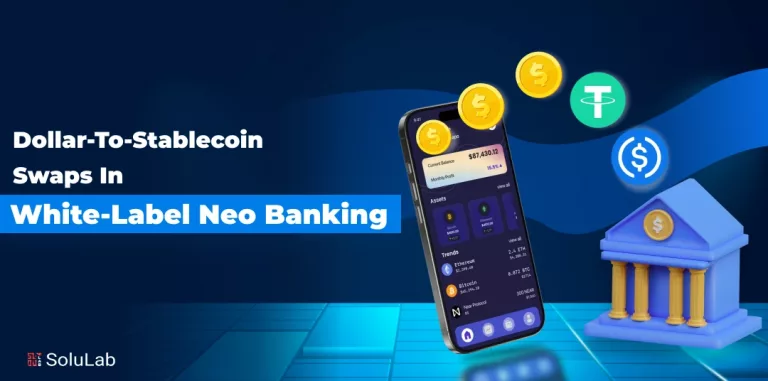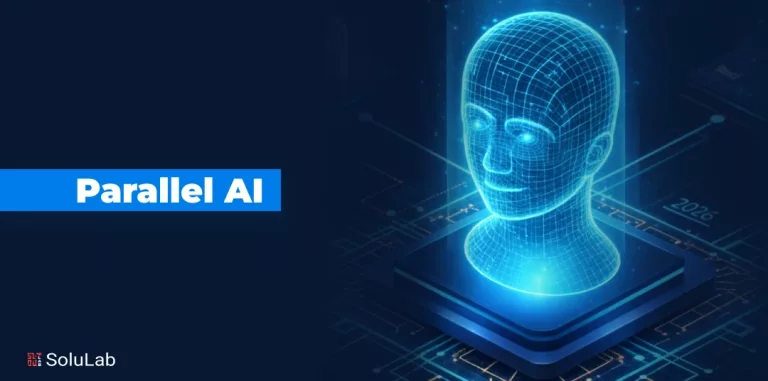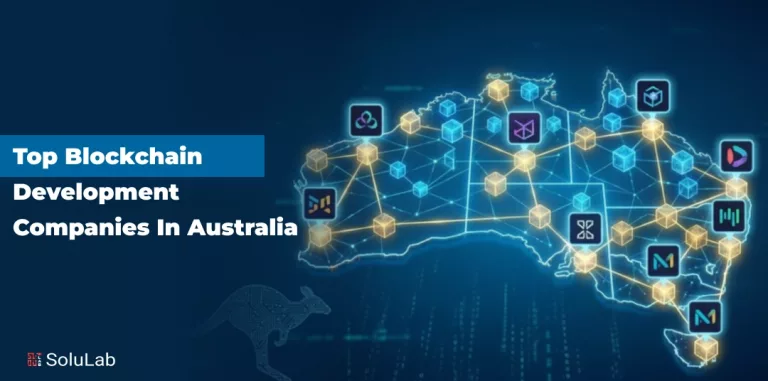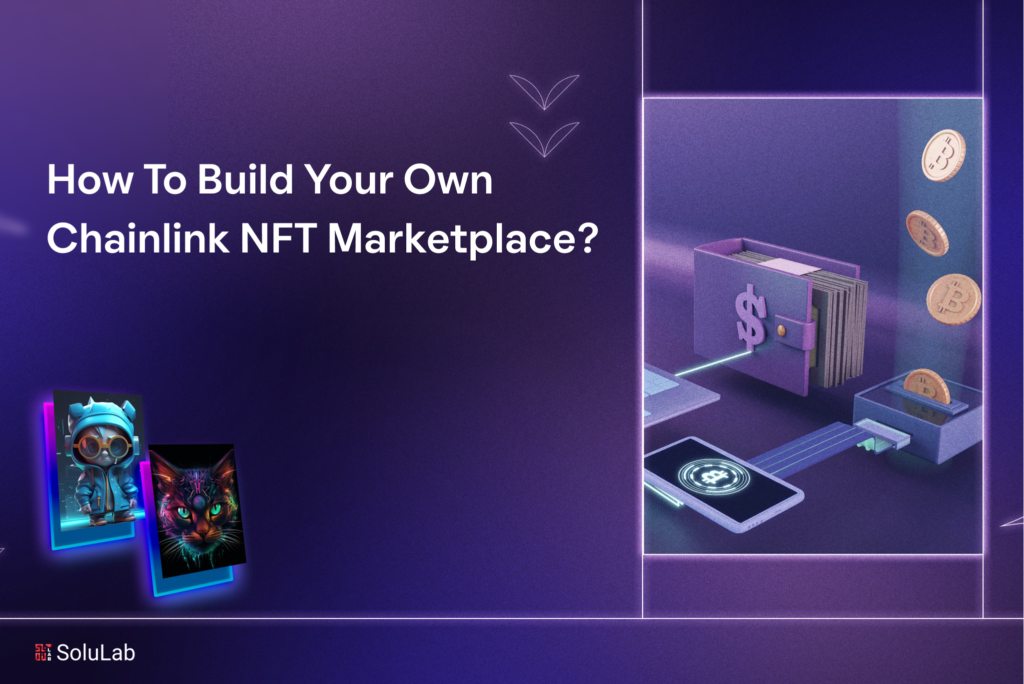
Non-fungible tokens (NFTs) are revolutionizing the digital world, offering unique ownership over digital assets. If you’re interested in building an NFT marketplace, this guide will help you understand how to use Chainlink, a decentralized oracle network, to create a robust and secure platform.
Introduction
Blockchain technology has become a game-changer in various industries, but one of its most intriguing applications is in the creation of Non-Fungible Tokens (NFTs). These digital assets have sparked a new wave of digital ownership and creativity in the Web3 community. Building an NFT marketplace development requires a deep understanding of blockchain technology, especially when considering factors such as transaction speed, transaction costs, and security. Features.
One of the key components in building a successful NFT marketplace is the integration of a decentralized oracle network like Chainlink. Chainlink provides reliable and secure data feeds to smart contracts, ensuring the accuracy and trustworthiness of the information used in NFT transactions.
To begin crafting your own Chain Link-powered NFT marketplace, you first need to consider the design and architecture of your platform. Determine the functionalities you want to offer, such as buying, selling, and trading NFTs, as well as features like auctions, royalties, and collections. This will help you create a user-friendly and engaging marketplace for collectors and creators alike.
Next, you’ll need to set up a blockchain infrastructure that supports NFTs. Ethereum is the most popular choice due to its robust smart contract capabilities and vast ecosystem. Ensure that you have a good understanding of Solidity, the programming language used for creating smart contracts on the Ethereum blockchain.
Once you have your blockchain infrastructure in place, you can start integrating Chainlink into your NFT marketplace. Chainlink acts as a bridge between your smart contracts and external data sources, providing real-time information such as market prices, provenance data, and even off-chain metadata associated with NFTs.
Read Also: How to Build an NFT Marketplace on Ethereum Blockchain?
To integrate Chainlink, you’ll need to deploy Chainlink nodes that act as decentralized oracles. These nodes retrieve data from designated APIs and feed it into your smart contracts. You can choose from various Chainlink node operators or even run your own if you have the technical expertise.
When deploying your Chainlink nodes, ensure that you select reliable and trusted data sources that align with the specific needs of your NFT marketplace. For example, if your marketplace focuses on artwork, you may want to integrate data feeds from art marketplaces, galleries, or authentication services to validate the authenticity of the NFTs.
Additionally, it’s crucial to implement proper security measures to protect your NFT marketplace from potential vulnerabilities and attacks. Chainlink provides secure data transmission through cryptographic protocols, but it’s essential to follow best practices in smart contract development and conduct thorough audits to identify any potential risks.
Lastly, consider the user experience of your NFT marketplace. Implement intuitive interfaces, seamless navigation, and responsive design to ensure that collectors and creators can easily interact with your platform.
Explanation of Chainlink NFT Marketplace and its Benefits
A Chainlink NFT marketplace employs Chainlink’s decentralized oracle network to facilitate the buying, selling, and trading of NFTs. This type of marketplace has several advantages, such as enabling smart contracts on Ethereum to securely access off-chain data feeds, web APIs, and traditional bank payments.
Chainlink’s decentralization ensures that the marketplace operates transparently and securely. It reduces the risk of single-point failures by relying on multiple independent nodes to fulfill a data request. Moreover, Chainlink’s external adaptors allow the integration of any API, enabling access to any kind of data required for your NFT marketplace.
Understanding Chainlink NFTs
NFTs, or non-fungible tokens, represent a unique class of digital assets. Unlike cryptocurrencies such as Bitcoin or Ethereum, which are fungible and can be exchanged on a one-for-one basis, NFTs represent unique assets. This uniqueness can be linked to digital art, virtual real estate, digital collectibles, and more.
Definition and Features of Chainlink NFTs
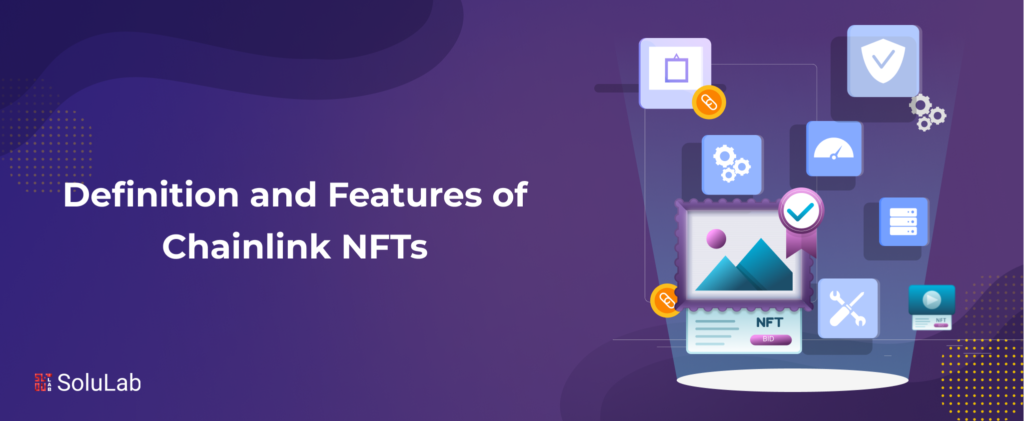
Chainlink NFTs are unique digital assets that are minted using the Chainlink network. They carry special attributes and metadata that distinguish them from other tokens. One of the main features of Chainlink NFTs is their ability to incorporate real-world data through Chainlink oracles, allowing for more dynamic and interactive digital assets. For example, a Chainlink NFT representing a piece of digital art can have real-time information about the artist, the current value of the artwork, or even the number of times it has been viewed. This integration of real-world data adds an extra layer of authenticity and utility to Chainlink NFTs.
Another notable feature of Chainlink NFTs is their interoperability. They can be seamlessly transferred between different NFT marketplaces or integrated into various decentralized applications (dApps) within the blockchain ecosystem. This means that the value and uniqueness of a Chainlink NFT can extend beyond a single marketplace, creating more opportunities for collectors, creators, and investors.
Read Also: BSC NFT Marketplace Development: Everything You Need to Know
Furthermore, Chainlink NFTs benefit from the security and reliability provided by the Chainlink network. By utilizing decentralized oracle networks, Chainlink ensures that the data associated with each NFT is accurate, tamper-proof, and verifiable. This is crucial for maintaining trust and transparency within the NFT ecosystem, as it prevents counterfeit or fraudulent assets from circulating.
In summary, Chainlink NFTs offer a new dimension to the world of digital assets. With their ability to incorporate real-world data, seamless interoperability, and enhanced security, they provide a unique and valuable experience for collectors, creators, and investors in the NFT marketplace. Whether you’re interested in digital art, virtual real estate, or any other form of digital collectibles, Chainlink NFTs open up a world of possibilities.
How Chainlink NFTs Differ from Other NFTs
Chainlink NFTs stand out from others due to their integration with Chainlink’s decentralized Oracle network. This enables them to use real-world data and events to create dynamic NFTs that can change based on specified conditions. For instance, an NFT artwork could change appearance based on weather data provided by a Chainlink oracle., allowing the artwork to reflect the current weather conditions in real-time. This unique feature sets Chainlink NFTs apart from traditional static NFTs, adding a layer of interactivity and adaptability.
Additionally, Chainlink NFTs offer enhanced interoperability compared to other NFTs. They can seamlessly move between different marketplaces and be integrated into various decentralized applications within the blockchain ecosystem. This means that collectors and creators have more flexibility and opportunities to showcase and monetize their Chainlink NFTs.
Read Our Blog: How To Launch Your Own NFT Marketplace Website in Less Than 2 Days?
Moreover, the security and reliability provided by Chainlink’s decentralized oracle network give Chainlink NFTs an added advantage. The use of oracles ensures that the data associated with each NFT is accurate, tamper-proof, and verifiable. This helps to maintain trust and transparency within the NFT ecosystem, safeguarding against counterfeit or fraudulent assets.
In summary, while other NFTs may focus solely on the uniqueness and scarcity of digital assets, Chainlink NFTs elevate the concept by incorporating real-world data, offering seamless interoperability, and providing enhanced security. These features make Chainlink NFTs a compelling choice for those seeking a more dynamic and interactive NFT experience, where the potential for creativity and utility knows no bounds.
Benefits of Using Chainlink in NFT Marketplaces
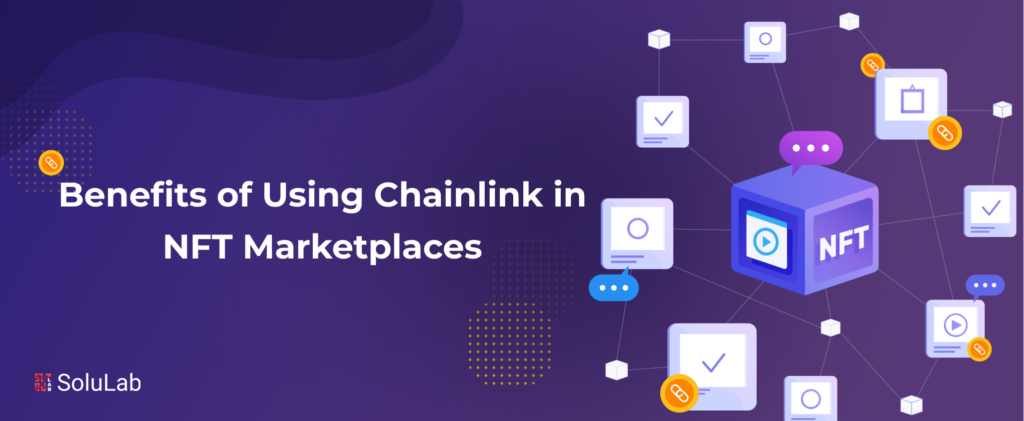
The integration of Chainlink in NFT marketplaces provides numerous benefits. The Chainlink network provides reliable, tamper-proof inputs and outputs for complex smart contracts on any blockchain. This allows for the creation of fully-secured, autonomous, and data-driven NFT marketplaces.
Moreover, Chainlink enables the creation of dynamic NFTs that interact with real-world data and APIs, opening up a new world of possibilities for digital assets. It also offers a proven solution to the “oracle problem”, ensuring that off-chain data used in on-chain contracts is reliable and secure. This is crucial in the context of NFT marketplaces, where accurate and trustworthy data is essential for valuing and trading digital assets.
Read Also: Avalanche NFT Marketplace Development: A Complete Guide
By integrating Chainlink into NFT marketplaces, creators and collectors can leverage the power of real-world data to enhance the value and functionality of their NFTs. For example, an artist could create an NFT that changes based on the price of a specific cryptocurrency, allowing the artwork to reflect the volatility of the market. This dynamic nature of Chainlink NFTs adds a layer of excitement and relevance to the digital collectibles space.
Additionally, the integration of Chainlink ensures seamless interoperability between different NFT marketplaces and blockchain platforms. This means that NFTs created on one marketplace can easily be bought, sold, or transferred to another, expanding the reach and potential audience for these digital assets. It also enables developers to build decentralized applications that can interact with Chainlink NFTs, further enhancing their utility and value within the blockchain ecosystem.
Furthermore, the security and reliability of Chainlink’s Oracle network provide a solid foundation for NFT marketplaces. The use of decentralized oracles ensures that the data used to determine the value and attributes of an NFT is accurate and tamper-proof. This mitigates the risk of counterfeit or fraudulent NFTs, safeguarding the integrity of the marketplace and instilling trust among participants.
In conclusion, integrating Chainlink into NFT marketplaces brings a multitude of benefits. From enabling the creation of dynamic NFTs that interact with real-world data to ensuring seamless interoperability and providing robust security, Chainlink enhances the overall experience and value proposition of NFTs. As the NFT market continues to grow, the use of Chainlink’s decentralized oracle network will undoubtedly play a pivotal role in shaping the future of digital collectibles.
Building Your Own Chainlink NFT Marketplace

Creating your own Chainlink NFT marketplace involves several steps: research and planning, setting up the blockchain infrastructure, designing the user interface, implementing Chainlink Oracle integration, and finally, testing and deployment.
Step 1: Research and Planning
-
Identify your Target Audience
Your first task is to identify your target audience. Who are your potential users? What kind of NFTs are they interested in? Understanding your audience will help shape the design and functionality of your marketplace.
-
Determine the Scope and Features of Your Marketplace
Next, determine the scope of your marketplace. Will it cater to a specific niche, or will it be a general marketplace? Additionally, decide on the key features your platform will offer. This could include auction capabilities, direct buying and selling, artist profiles, and more.
-
Understand the Technical Requirements
Building an NFT marketplace is a technologically-intensive project. Familiarize yourself with the necessary technologies, including Solidity for creating smart contracts, Hardhat for Ethereum development, and Chainlink for Oracle services.
Read Also: Solana NFT Marketplace: How to build your own NFT Marketplace on Solana
Step 2: Setting Up the Blockchain Infrastructure
-
Choose a Compatible Blockchain Platform
While Ethereum is the most popular platform for NFTs, other blockchains like BNB Chain and Polygon also support NFTs. The choice depends on your specific requirements, such as transaction speed and cost.
-
Install Necessary Software and Tools.
You’ll need to install certain software and tools, such as Node.js and Yarn. Also, familiarize yourself with Ethereum terminology and the basics of JavaScript.
-
Configure Smart Contracts and APIs
Next, configure the smart contracts that hold the business logic for your NFT marketplace. You’ll need to create functions for listing, buying, and updating NFTs, among others. Also, configure APIs for fetching external data if needed.
Step 3: Designing the User Interface
-
Create a User-friendly and Visually Appealing Interface
A well-designed user interface can make or break your marketplace. Ensure that it is visually appealing and easy to navigate. Use intuitive design principles to ensure a smoother experience.
-
Implement Intuitive Navigation and Search Features
Implement a robust search functionality to allow users to easily find specific NFTs. Also, ensure that the navigation is intuitive and user-friendly, allowing users to easily access all parts of the marketplace.
-
Ensure Seamless Integration with Blockchain Functionalities
The user interface should seamlessly integrate with the backend blockchain functionalities. Users should be able to interact with the smart contracts through the interface, such as listing NFTs for sale or buying them.
Step 4: Implementing Chainlink Oracle Integration
-
Understand the Role of Chainlink Oracles in NFT Marketplaces
Chainlink oracles play a crucial role in NFT marketplaces by providing reliable and secure real-world data to smart contracts. They can provide data like asset prices, weather data, etc., which can be used to create dynamic NFTs.
-
Integrate Chainlink Oracles to Fetch External Data
Next, integrate Chainlink oracles into your marketplace to fetch external data. This involves writing smart contract functions that make data requests to Chainlink oracles and handling the responses once they arrive.
-
Ensure Secure and Reliable Data Feeds for NFT Transactions
Ensuring the security and reliability of data feeds is crucial for the success of your marketplace. Use Chainlink’s decentralized network to ensure that your data feeds are tamper-proof and reliable.
Read Our Blog Post: Polkadot NFT Marketplace Development: Everything You Need to Know
Step 5: Testing and Deployment
-
Conduct Thorough Testing of all Marketplace Functionalities
Before deploying your marketplace, it’s crucial to conduct thorough testing of all its functionalities. This includes testing the smart contracts, the user interface, and the integration with Chainlink oracles.
-
Address any Bugs or Issues Identified During Testing
If any bugs or issues are identified during testing, address them immediately. This could involve debugging the smart contracts, fixing UI issues, or resolving issues with the Chainlink Oracle integration.
-
Deploy the Chainlink NFT Marketplace to a Live Environment
Once you’ve thoroughly tested your marketplace and addressed all issues, it’s time to deploy it to a live environment. This involves deploying the smart contracts to the Ethereum mainnet or any other compatible blockchain and launching the user interface.
Conclusion
Building a Chainlink NFT marketplace is an exciting project that combines the power of NFTs and Chainlink oracles. By following this guide, you’ll not only gain a deeper understanding of NFTs and Chainlink but also acquire the necessary skills to create a functional, secure, and user-friendly NFT marketplace. Remember, the key to a successful marketplace lies in understanding your audience, offering unique and valuable NFTs, and ensuring a seamless user experience throughout the platform. Additionally, it’s important to stay up-to-date with the latest developments in the NFT and blockchain space to continuously improve and innovate your marketplace.
Once your Chainlink NFT marketplace is live, you can further enhance its functionality by incorporating additional features. One such feature could be the implementation of a rating and review system for both buyers and sellers. This would enable users to provide feedback on their experiences, helping to build trust within the community and promote transparency.
SoluLab, a leading technology development company, is here to assist you in creating your own Chainlink NFT marketplace. With their extensive experience in blockchain development and expertise in NFT technology, SoluLab can help you bring your vision to life.
SoluLab is a renowned NFT marketplace development company with a proven track record in creating innovative solutions for artwork, digital collectibles, gaming, asset tokenization, and more. Their team of specialized NFT developers excels in cryptocurrency and blockchain development, offering top-notch services that automate processes through smart contracts. With a strong focus on user-friendliness and security, SoluLab’s platform development ensures a seamless trading experience with customizable features, including highly secure digital wallets. For those seeking to build cutting-edge NFT solutions that drive business growth and success, look no further than SoluLab. Contact them today to hire certified NFT developers and take the first step toward revolutionizing the digital asset trading landscape.
In conclusion, building a Chainlink NFT marketplace requires careful planning, attention to detail, and a deep understanding of both NFTs and Chainlink oracles. By following the steps outlined in this guide and continuously improving and innovating your platform, you can create a successful and thriving marketplace that meets the needs of both buyers and sellers in the exciting world of NFTs.
FAQs
1. What is a Chainlink NFT marketplace?
A Chainlink NFT marketplace is a platform where users can buy, sell, and trade non-fungible tokens (NFTs) that are powered by Chainlink oracles. Chainlink oracles provide reliable and tamper-proof data feeds that enhance the functionality and value of NFTs. These marketplaces enable users to explore a wide range of unique digital assets, including artwork, collectibles, virtual real estate, and more.
2. Do I need coding skills to build a Chainlink NFT marketplace?
Building a Chainlink NFT marketplace does require technical expertise, but you don’t necessarily need to have coding skills yourself. It is recommended to work with a professional development team, like SoluLab, which specializes in blockchain and NFT marketplace development. They can handle the technical aspects and guide you through the entire process, from design to deployment.
3. How can a Chainlink NFT marketplace benefit me as a creator?
A Chainlink NFT marketplace offers several benefits to creators. It provides a platform to showcase and sell your digital creations directly to a global audience without relying on intermediaries. Additionally, the integration of Chainlink oracles ensures the authenticity and verifiability of your NFTs, enhancing their value and trustworthiness. Furthermore, a well-designed marketplace can help you reach new customers, build a loyal community, and potentially earn revenue through transaction fees.
4. Can I customize my Chainlink NFT marketplace to align with my brand?
Yes, one of the advantages of building your own Chainlink NFT marketplace is the ability to customize it according to your brand identity. With the assistance of a development team like SoluLab, you can create a marketplace that reflects your brand’s aesthetics, user experience preferences, and unique features. This ensures a cohesive and engaging platform that resonates with your target audience.
5. How can SoluLab help me in building a Chainlink NFT marketplace?
SoluLab is a leading technology development company with extensive experience in blockchain development and the NFT marketplace. They can assist you in crafting your own Chainlink NFT marketplace by providing end-to-end development services, including design, development, deployment, and ongoing support. Their team of experts understands the intricacies of building secure and user-friendly marketplaces and can guide you through the process while incorporating Chainlink’s powerful Oracle technology.




